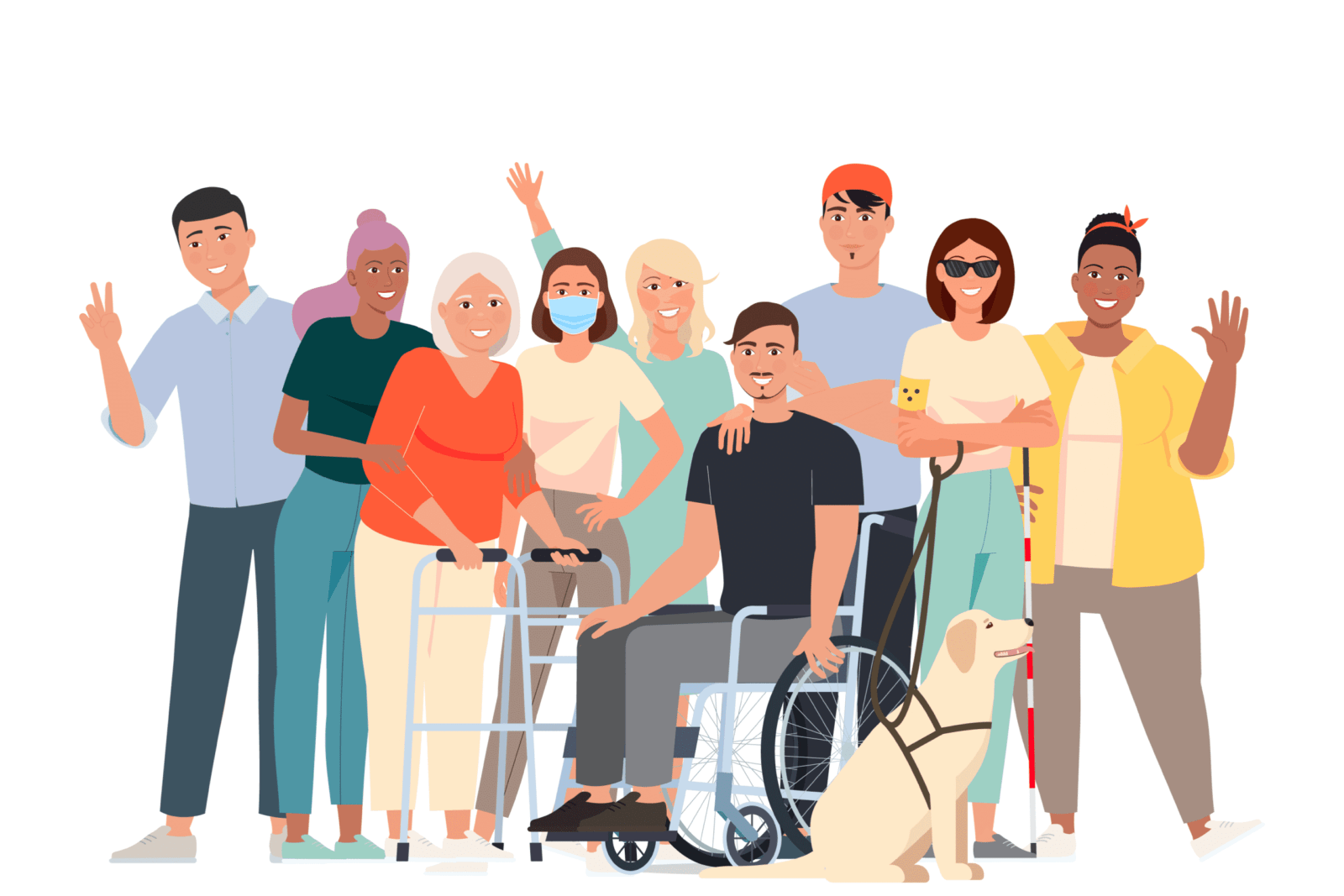June 2022
Design for Everybody: What is Inclusive Graphic Design?
A great way to brand your business through your website is to create a web page design that can be for everyone. One popular trend today with web page design is inclusive graphic design. In this article, we will tell you all about inclusive graphic design and some elements of the design that you can incorporate into your business website.
What is Inclusive Graphic Design?

What is Inclusive Graphic Design?
Inclusive graphic design considers the full gamut of the human experience. It translates into many different languages, cultures, and ages. It inspires graphic designers to create imagery that can appeal to as many people as possible. Inclusive graphic design is also an optimal feature in a responsive web design, as it considers many aspects of a user’s ability such as eyesight, dexterity, hearing, and memory.
The Importance of Inclusive Design
Inclusive graphic design is important because it facilitates a great user experience (UX) for all. Approximately 15% of the world’s population has some form of disability. This diverse audience needs to feel they are included instead of excluded from a great experience on the web.
This inclusive design will also brand your business as one that has empathy for those with disabilities. Your website users will feel that your brand is providing equal access and opportunity to them. This will no doubt boost your brand as a leader in the market, as people prefer to associate with a company that stands for a principle.
Inclusive graphic design is great for search engine optimization (SEO), as well. This responsive web design boosts the organic traffic on your website significantly. This is because search engines value user experiences that have inclusiveness in their design. These inclusive elements include descriptive link text, alt text in images, and closed captioning in videos for the hearing-impaired.
Lastly, inclusive graphic design is important because it helps increase sales for your product or service. This is because an inclusive website design will expose your website to a much larger and more diverse customer base.
Accessibility vs Inclusive Design
Inclusive design varies in accessibility. An accessible design is the ultimate outcome of an effective inclusive design process. It focuses on the end result of the design. The goal of accessible design is to ensure all users can use and benefit from your website. Some examples of accessibility include:
- Descriptions of data from charts, illustrations, and diagrams
- Brief descriptions of non-text content including video and audio files
- Labels for user interface components, including form controls
Inclusive graphic design differs from accessibility because it focuses on the graphic design itself, not the ultimate outcome. The web design process starts with discovering which elements or situations on a web page where some people may be excluded from using a particular technology due to their disability. Graphic designers then try to remedy these issues to make the design more inclusive for all.
Inclusive Design Principles
There are several inclusive design principles that can make the user experience better for a diverse group. To design an inclusive web page, take into consideration the following principles:
- Identify the Exclusions
Study your website and find these points of exclusion. Use them to generate new ideas on how to make them inclusive solutions. For example, if your website is missing alt text on images, be sure to include it in the design.
- Identify the Challenges in Situations
Exclusion can happen on a situational basis, too. For instance, if a user is in a busy, crowded, and noisy place and on your website watching a video, they may not be able to hear the video. The solution for this is to provide closed captioning on your video so the user has an alternative for understanding the video content that they may not be able to hear otherwise.
- Avoid Any Personal Biases You May Have
To combat any personal biases you may have, you may want to involve people from other communities in your graphic design process. You can incorporate user testing into this process to see what you may need to accommodate.
- Create Many Different Ways for Users To Engage with Your Website
Another aspect of inclusive graphic design is to provide many different ways for users to engage in your website. The more options users have, the better the overall experience. For example, you can offer transcription options for the hearing-impaired.
- Provide an Equal Experience for All Users
Your user experiences should be comparable when you design ways for people to engage in your website. For instance, you can offer various playback speeds so users with hearing impairments can have an equal experience as your other website users.
Once you include these inclusive graphic design principles into your website, you will be sure to see an increase in organic traffic because your website design is now inclusive for all.
Inner Works Pro has many website development services that can help you reach your business goals. Contact us today to get started on your business assessment.
